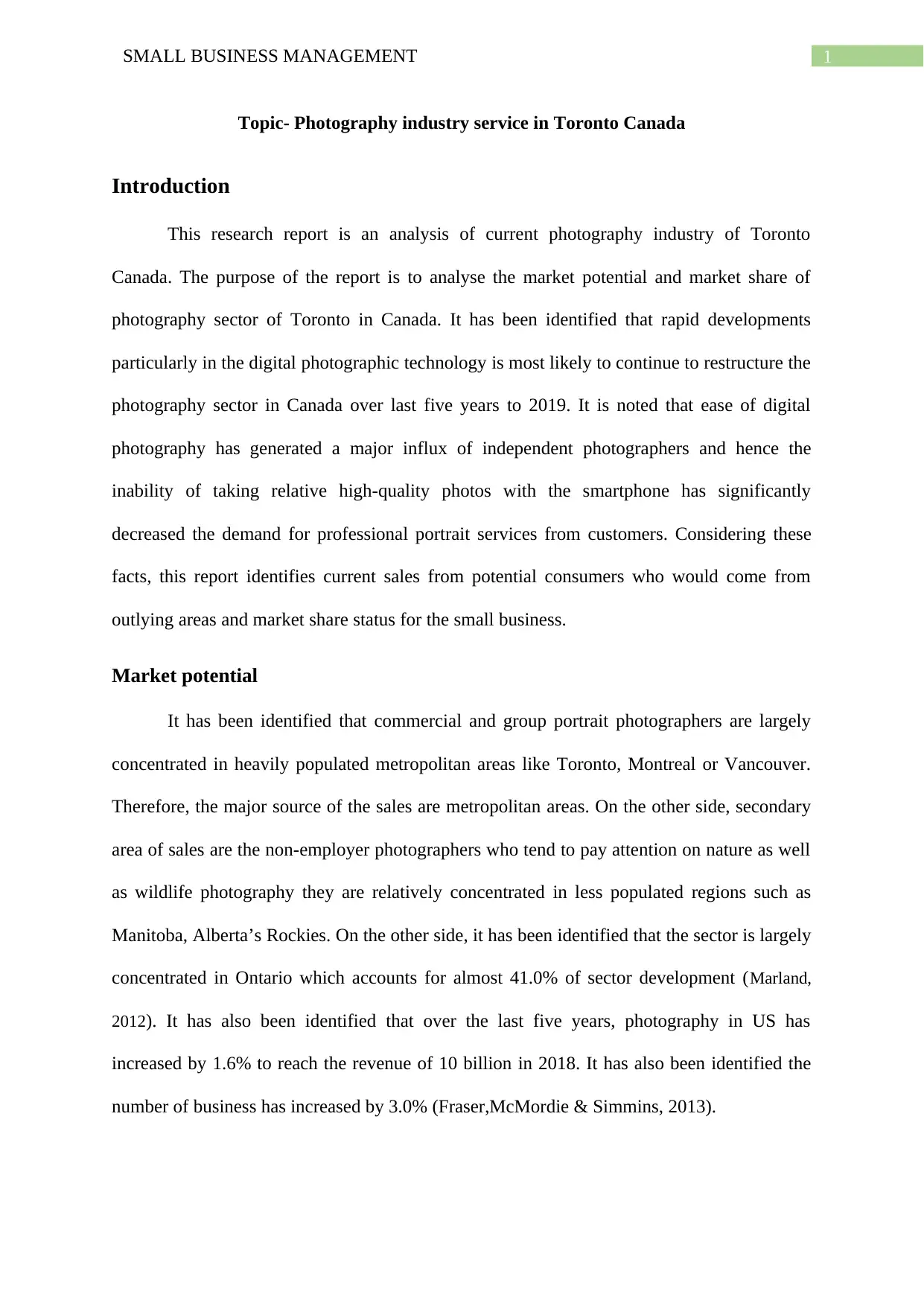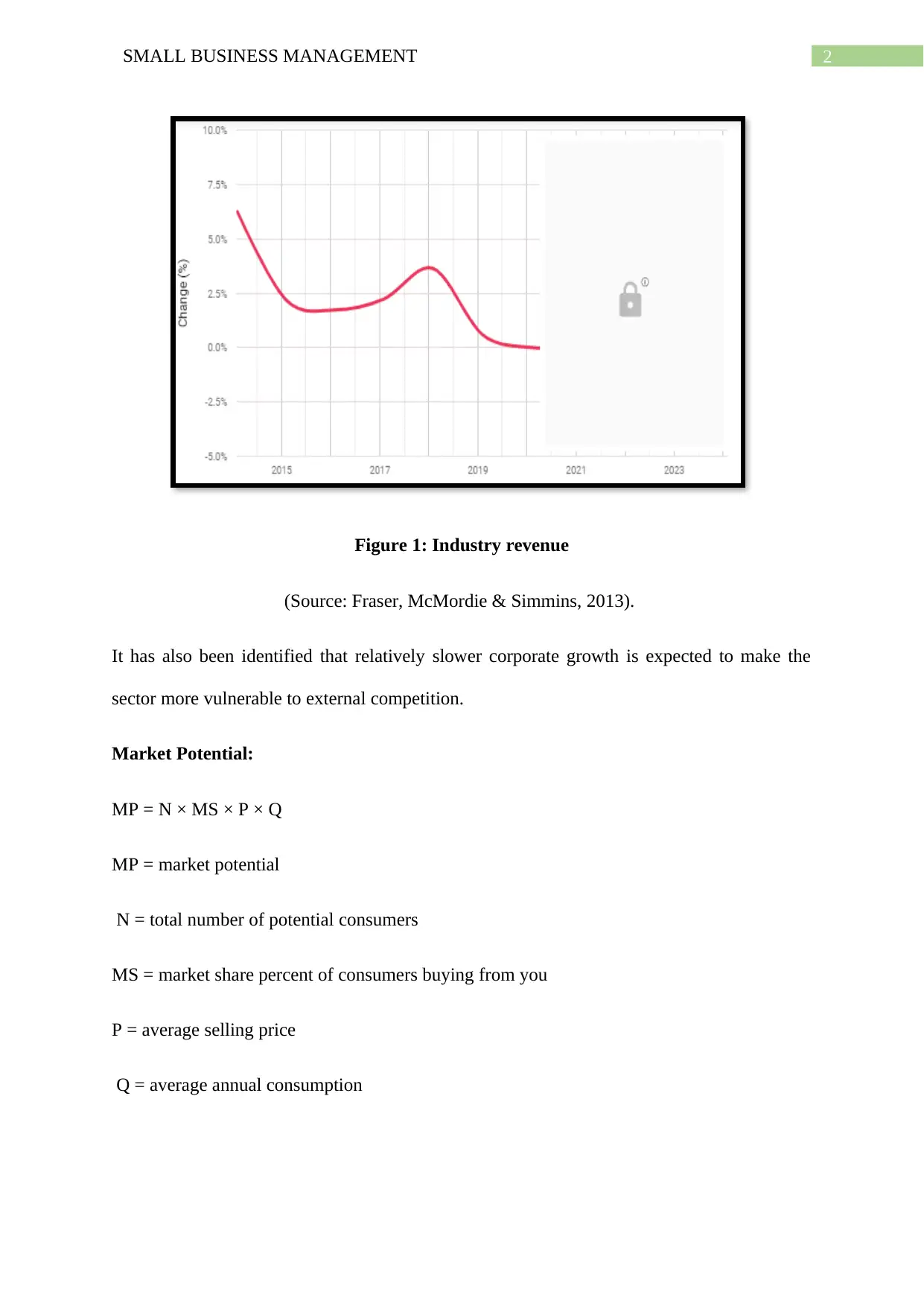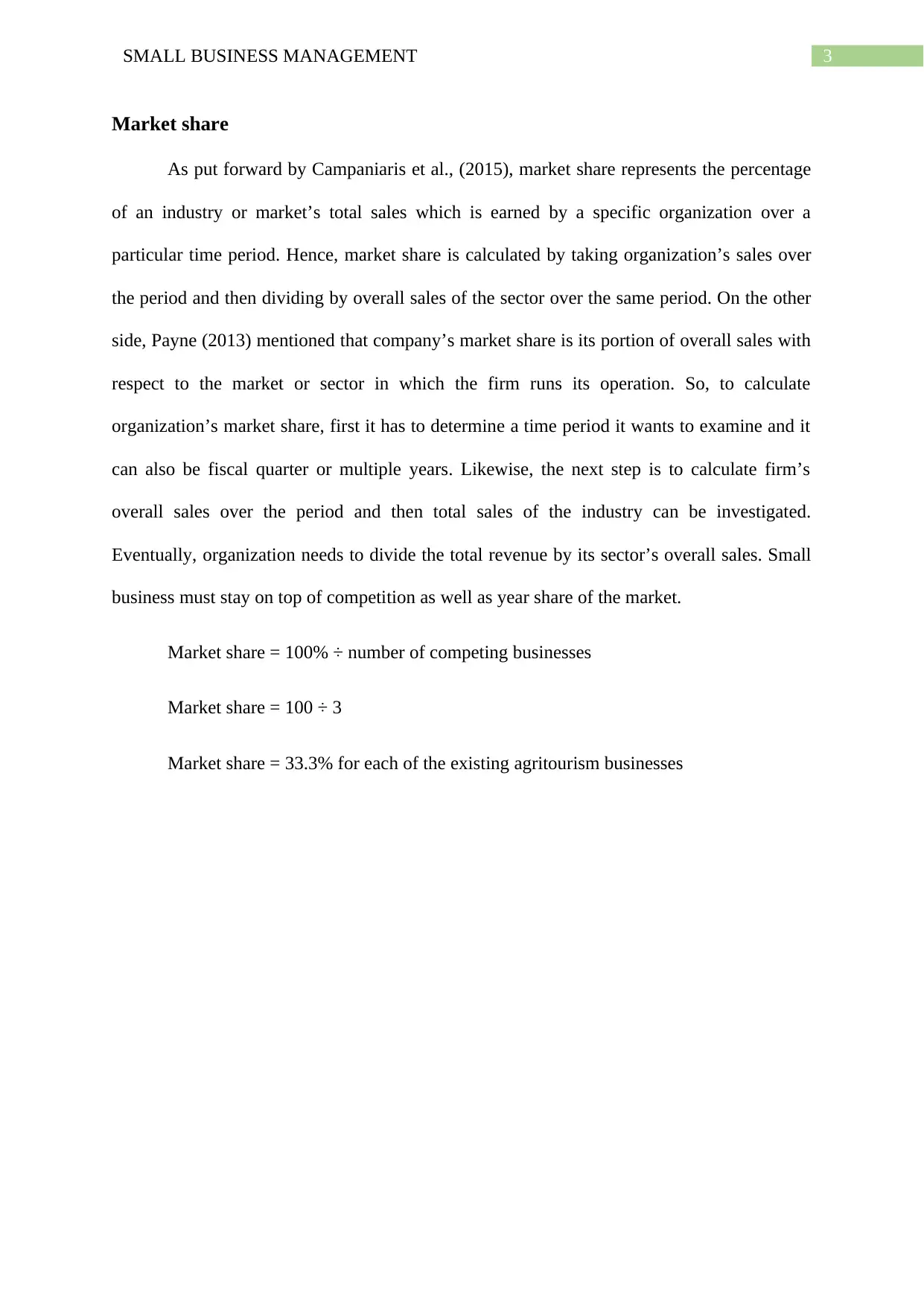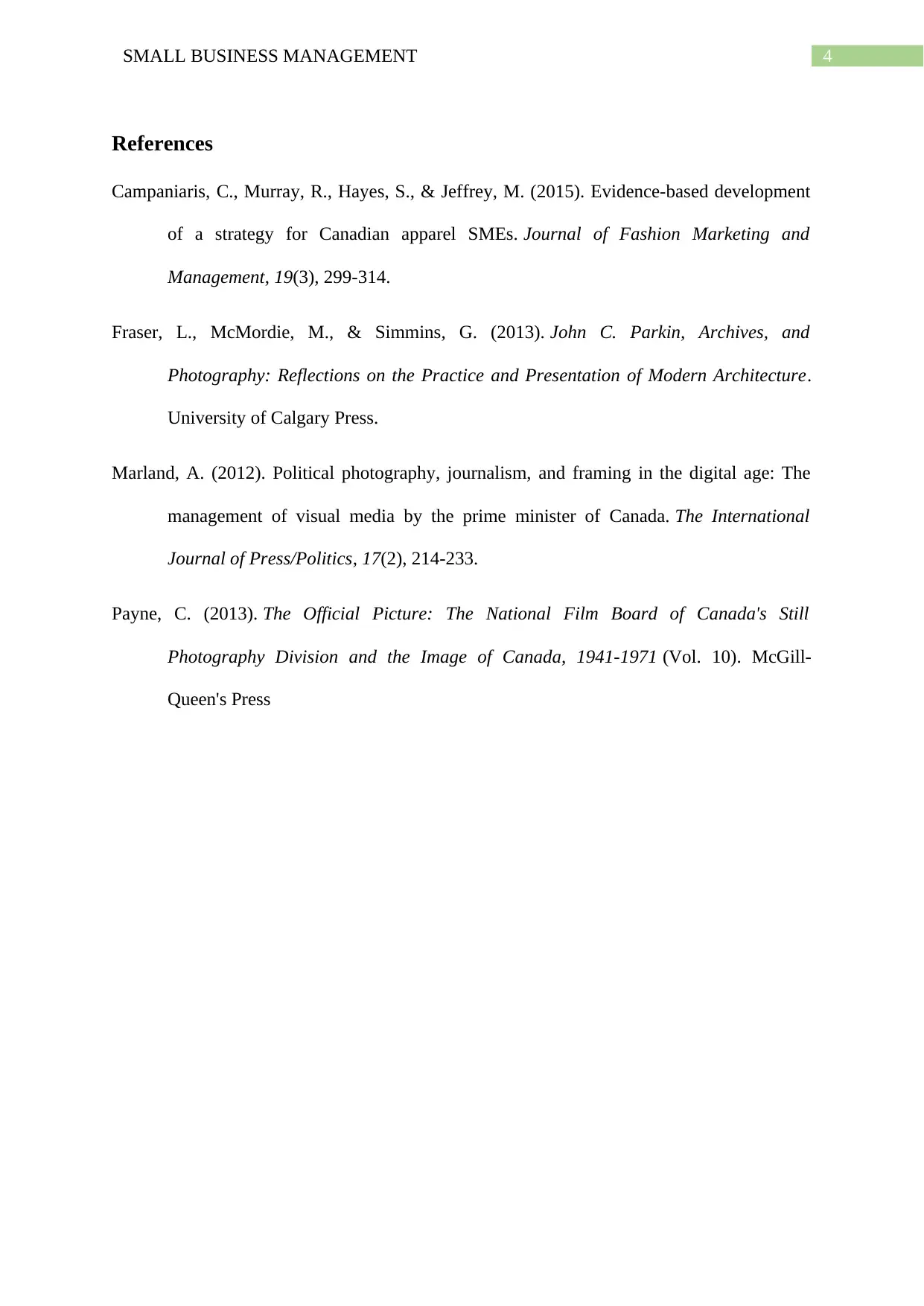Analysis of the Photography Industry in Toronto, Canada
VerifiedAdded on 2023/01/10
|5
|815
|70
Report
AI Summary
This report analyzes the photography industry in Toronto, Canada, focusing on market potential and market share for small businesses. It begins with an introduction outlining the rapid developments in digital photographic technology and its impact on the industry, particularly the influx of independent photographers and the decline in demand for professional portrait services. The report identifies the primary sources of sales in metropolitan areas like Toronto and secondary areas in less populated regions. It then delves into market potential, using a formula that considers the number of potential consumers, market share, average selling price, and average annual consumption. The report also defines market share and explains how it's calculated, emphasizing the importance of staying competitive. References include works by Marland (2012), Fraser, McMordie & Simmins (2013), and others, providing a comprehensive overview of the sector.
1 out of 5






![[object Object]](/_next/static/media/star-bottom.7253800d.svg)